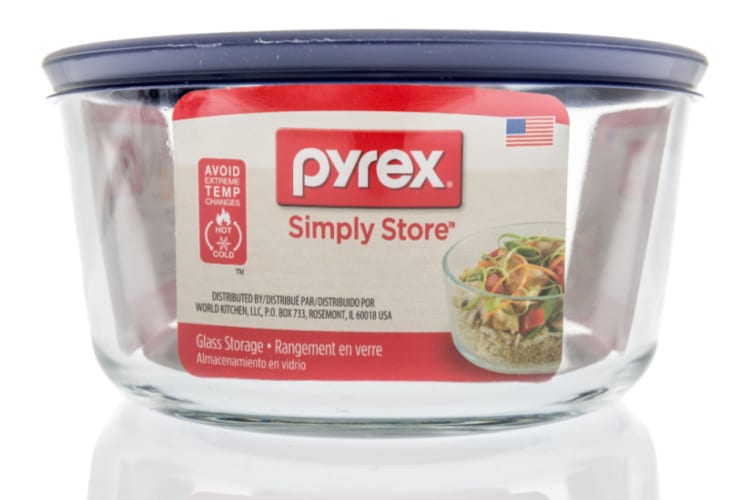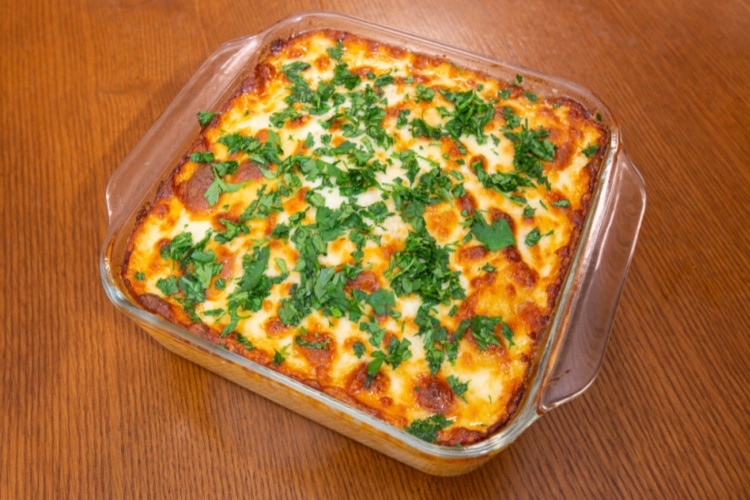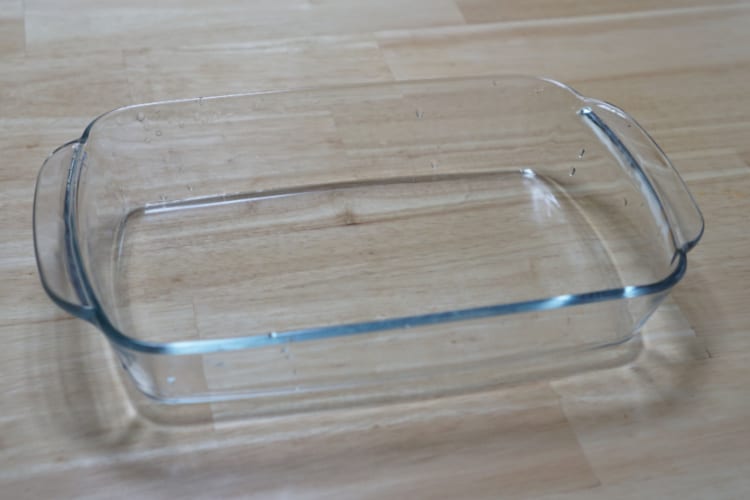The short answer is yes; Pyrex Glassware is microwave safe. However, it can experience thermal shock if it moves too quickly between hot and cold surfaces.
Let’s see how you can safely microwave your Pyrex glassware without shattering it into pieces.
See also: Can You Put Cardboard in the Microwave?
What Is Pyrex?

Pyrex is a brand of durable glass kitchenware that can withstand extreme temperatures. This durable glass was originally developed for railroad signal lanterns back in 1908 by Corning Glassworks Company.
In 1914, Jesse Littleton, a physicist working for the company, brought a glass piece to his wife, who used it to bake a cake. When it became apparent that the glass could withstand high temperatures, Corning started to produce and sell glass kitchenware under the Pyrex trademark throughout the US.
Pyrex became a household name in the 1930s across the US, largely thanks to the automated production process that led to an increased supply and lower production costs. Since then, Pyrex has been a wildly popular choice for glass bakeware. Its suitability for microwave cooking increased the brand’s popularity over the next decades as well.
However, the composition of Pyrex changed a lot over the years, and it’s no longer made with the same materials it was produced from in its early days. Let’s explore how Pyrex glassware is made and how it has changed in the last decades in more detail.
What Is Pyrex Made Of?
Up until the 40s, Pyrex glassware was mostly made out of borosilicate glass, a type of glass that’s modified with materials such as boric oxide or silica. These materials make the glass sturdier and more durable.
However, tempered soda lime glass started to replace borosilicate glass in Pyrex during the 40s, and these days, the US manufacturer only uses tempered soda-lime glass for Pyrex dishes.
Let’s see how borosilicate and tempered soda lime glass are different in more detail.
Borosilicate
Borosilicate glass is durable against extreme temperature changes and is frequently used in glass lab equipment. It’s great for baking, storing, and serving food, thanks to its high resistance to thermal shock.
If you want to take your dish from the oven and place it on a cold counter, Borosilicate glassware is what you want.
When Pyrex was first manufactured, the glassware was made solely out of borosilicate glasses. However, that is not the case anymore.
The US manufacturer of Pyrex gradually started to introduce tempered soda lime glassware to its collection and completely stopped producing borosilicate glassware in the following decades.
Tempered Glass
Tempered soda lime glass is also sturdy and can withstand extreme temperatures. During the tempering process, the glass is heated up to a very high temperature and cooled off under high pressure in a few seconds.
The process makes the tempered glass very sturdy and resistant to strong impact, such as being dropped on the counter. Thanks to this process, tempered glass is quite safe and has little chance of causing cuts when it shatters.
However, tempered glass has a relatively lower tolerance for thermal shocks, so it’s more prone to shattering due to temperature changes. That means it’s a bad idea to place a tempered glass baking dish on the counter after using it in the microwave.
What Are Some Ways to Use Your Pyrex?
Pyrex dishes can be used in microwaves and ovens to cook or heat your food. And not all meals can be consumed in one sitting. That surplus of food is not going to go to waste, though! Put it in the Pyrex, and in the freezer it goes!
You can use Pyrex to store food in your refrigerator and freezer. Fresh and cooked meat or vegetables, soups, and sauces can all be stored in Pyrex dishes. However, make sure to let your food (and Pyrex dish) get to room temperature before putting it in your refrigerator or freezer.
Pyrex is also dishwasher safe.
Is It Safe to Microwave Food in Pyrex?

Yes, it is safe to microwave food in your Pyrex glassware. Since it’s made of sturdy glass, it won’t shatter and heat your food well.
However, you shouldn’t microwave cold Pyrex. This is because the thermal shock might end up shattering your dish, leaving a disaster to clean in your microwave.
Make sure that:
- You do not pour anything hot into a cold Pyrex.
- You wait for your Pyrex to return to room temperature before popping it in the microwave.
- You do not put a hot Pyrex dish on a cold surface such as a wet or cold counter, the refrigerator, or the freezer. Be mindful that your dish can still be very hot when taken out directly from a dishwasher.
- Check for cracks. If your Pyrex has cracks, your dish might shatter in the microwave.
See also: Best Microwave Covers (Every Kitchen’s Must-Have)
Different Types of Pyrex Dishes
Pyrex has a diverse collection of glassware you can use in your kitchen. Here’s a rundown of some of their appliances and whether they can be microwaved safely.
| Glass Bowl | Storage Jars | Measuring Cups |
| Microwave safe Many size options to choose from Rectangle dishes Dishes come in clear glass, which helps you see what you stored in them | Not microwave safe Bamboo lid option Elongated containers Great pantry organizers | Microwave safe Easy to read markings in both metric and oz. Dishwasher safe with no fading Has different size options. |
Is Vintage Pyrex Different Than Current Pyrex?
Depending on its production year, vintage Pyrex might be made out of borosilicate. However, Corning, the company that produced Pyrex until 1998, had already started replacing borosilicate glass with tempered soda lime glass back in the 1940s.
Nobody knows when Corning completely stopped using borosilicate for their Pyrex dishes, but borosilicate had become quite expensive to produce in the 1980s due to air pollution regulations. Most US manufacturers stopped producing borosilicate glass cookware as a result.
If you want a Pyrex dish that isn’t made from tempered soda lime glass, you may have to search quite a bit in order to find vintage Pyrex made from borosilicate.
There are also stylistic differences between vintage and modern Pyrex. Nowadays, Pyrex manufactures a line of kitchen basics products from soda-lime glass, but they produced everything from carafes to casserole dishes and gravy boats to custard cups back in the day.
These dishes came in different colors and designs, and new collections were released every year for New Year’s and Christmas holidays. An avid fan base of vintage collectors like hunting down these dishes.
You can try your luck at your local secondhand shop to add some colorful and microwavable kitchenware to your shelf.
Borosilicate Glass Alternatives to Pyrex

You have limited options if you want borosilicate glassware for your kitchen: Borolux, a US-based company, offers borosilicate glass bakeware that can stand up to thermal shocks.
If you are based in Europe, you have a couple of options for borosilicate dishes. Pyrex is still made from borosilicate in Europe, as they haven’t switched over to soda-lime glass yet.
Czech Republic-based Simax® Glassware produces baking dishes from lab-grade borosilicate glass.
International Cookware also offers borosilicate baking dishes, as well as measuring cups.




